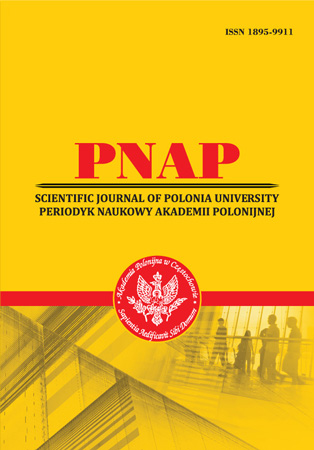ASSESSMENT OF THE RECEPTIVITY OF THE ENDOMETRIUM TO STEROID HORMONES IN WOMEN WITH CHRONIC ENDOMETRITIS
Abstract
Chronic endometritis (CE) is one of the main pathologies that lead to female infertility. Although research on the molecular and biological features of the endometrium in this disease has been conducted for a long time, the problem of studying the morphotype of CE remains relevant. Today, there is no universally accepted panel of immunohistochemical markers that would allow to fully evaluate the status of the endometrium before and after treatment, as well as to evaluate the effectiveness of the therapy. The purpose of our study was to study the features of the expression of markers of estrogen (ER) and progesterone (PR) receptors in order to make a prognosis for the recovery of patients with a possible subsequent pregnancy. For this, 2 research groups were formed using Peipel biopsies of female patients. Group I included cases before treatment, group II – after treatment. During the study, it was found that the criterion for the success of the treatment is a relative decrease of ER- and PR-positive cells both in the stroma (p<0.0001) and in the epithelium of the endometrium (p<0.0001). It was also found, that the expression of PR by the epithelium of the glands shouldn`t exceed 50% (p<0.0001), while for ER the critical level hasn`t been established (p=0.77) and it is possible to judge only the relative decrease in the expression of the marker.
References
2. Espinós, J. J., Fabregues, F., Fontes, J., García-Velasco, J. A., Llácer, J., Requena, A., Checa, M. Á., Bellver, J., & Spanish Infertility SWOT Group (SISG) (2021). Impact of chronic endometritis in infertility: a SWOT analysis. Reproductive biomedicine online, 42(5), 939–951. https://doi.org/10.1016/j.rbmo.2021.02.003
3. Dimitriadis, E., Sharkey, A. M., Tan, Y. L., Salamonsen, L. A., & Sherwin, J. R. (2007). Immunolocalisation of phosphorylated STAT3, interleukin 11 and leukaemia inhibitory factor in endometrium of women with unexplained infertility during the implantation window. Reproductive biology and endocrinology : RB&E, 5, 44. https://doi.org/10.1186/1477-7827-5-44
4. Yu, K., Huang, Z. Y., Xu, X. L., Li, J., Fu, X. W., & Deng, S. L. (2022). Estrogen Receptor Function: Impact on the Human Endometrium. Frontiers in endocrinology, 13, 827724. https://doi.org/10.3389/fendo.2022.827724
5. Mylonas, I., Jeschke, U., Shabani, N., Kuhn, C., Balle, A., Kriegel, S., Kupka, M. S., & Friese, K. (2004). Immunohistochemical analysis of estrogen receptor alpha, estrogen receptor beta and progesterone receptor in normal human endometrium. Acta histochemica, 106(3), 245–252. https://doi.org/10.1016/j.acthis.2004.02.005
6. Brosens, J. J., Tullet, J., Varshochi, R., & Lam, E. W. (2004). Steroid receptor action. Best practice & research. Clinical obstetrics & gynaecology, 18(2), 265–283. https://doi.org/10.1016/j.bpobgyn.2004.01.006
7. Chantalat, E., Valera, M. C., Vaysse, C., Noirrit, E., Rusidze, M., Weyl, A., Vergriete, K., Buscail, E., Lluel, P., Fontaine, C., Arnal, J. F., & Lenfant, F. (2020). Estrogen Receptors and Endometriosis. International journal of molecular sciences, 21(8), 2815. https://doi.org/10.3390/ijms21082815
8. Chatzipantelis, P., Koukourakis, M., Balaska, K., & Giatromanolaki, A. (2022). Endometrial Stromal Expression of ER, PR, and B-Catenin Toward Differentiating Hyperplasia Diagnoses. International journal of surgical pathology, 30(5), 492–498. https://doi.org/10.1177/10668969211065110
9. Mishra, K., Wadhwa, N., Guleria, K., & Agarwal, S. (2008). ER, PR and Ki-67 expression status in granulomatous and chronic non-specific endometritis. The journal of obstetrics and gynaecology research, 34(3), 371–378. https://doi.org/10.1111/j.1447-0756.2007.00700.x
10. Kazachkov, E. L., Voropaeva, E. E., Kazachkova, E. A., Zatvornitskaya, A. V., Dub, A. A., & Miroshnichenko, L. E. (2019). Morfologicheskaia kharakteristika éndometriia u patsientok s miomoĭ matki i khronicheskim éndometritom pri besplodii [Endometrial morphological characteristics in patients with hysteromyoma and chronic endometritis in infertility]. Arkhiv patologii, 81(6), 41–48. https://doi.org/10.17116/patol20198106141
11. Mylonas, I., Jeschke, U., Shabani, N., Kuhn, C., Kriegel, S., Kupka, M. S., & Friese, K. (2005). Normal and malignant human endometrium express immunohistochemically estrogen receptor alpha (ER-alpha), estrogen receptor beta (ER-beta) and progesterone receptor (PR). Anticancer research, 25(3A), 1679–1686.
12. Gao, M., Cao, C., Zhang, X., Tang, F., Zhao, L., Luo, S., & Li, L. (2019). Abnormal expression of estrogen receptor is associated with thin endometrium. Gynecological endocrinology : the official journal of the International Society of Gynecological Endocrinology, 35(6), 544–547. https://doi.org/10.1080/09513590.2018.1554035
Abstract views: 180 PDF Downloads: 140







